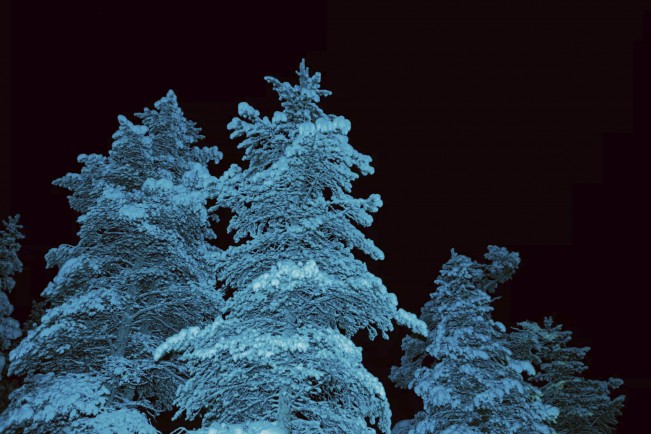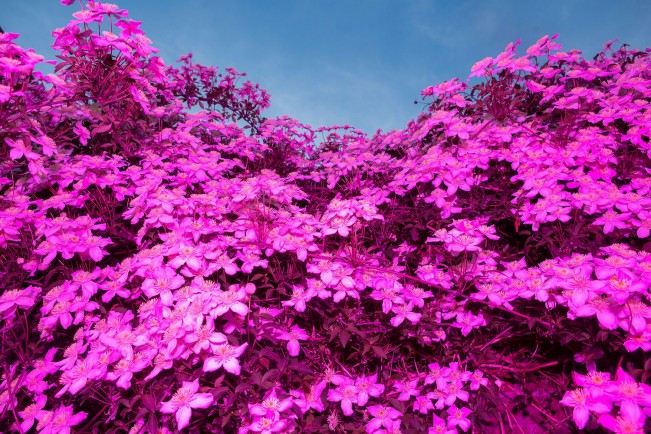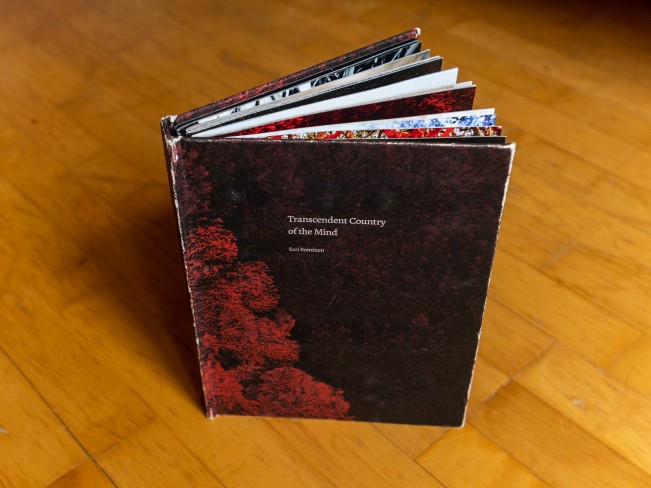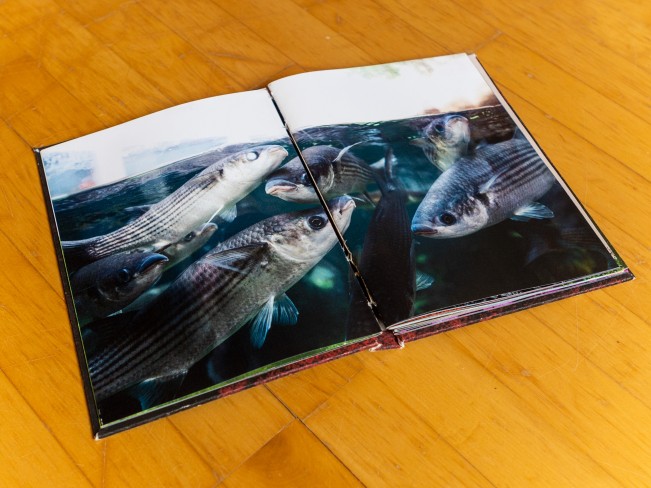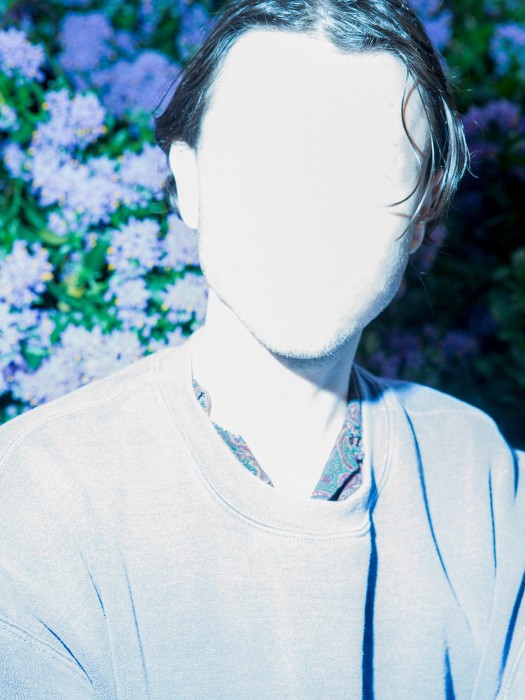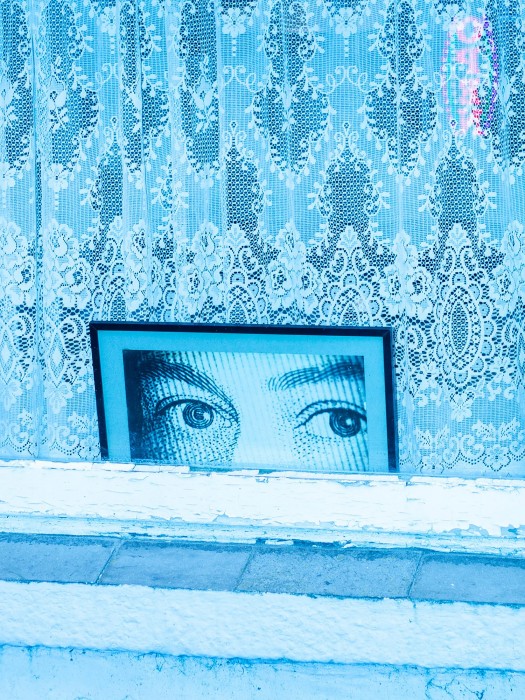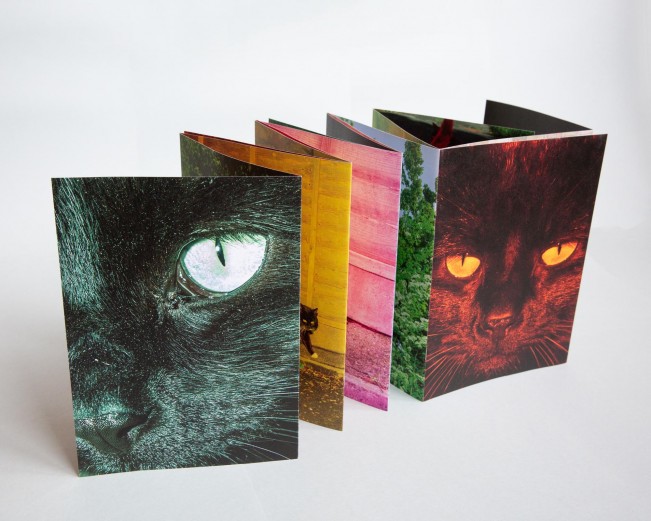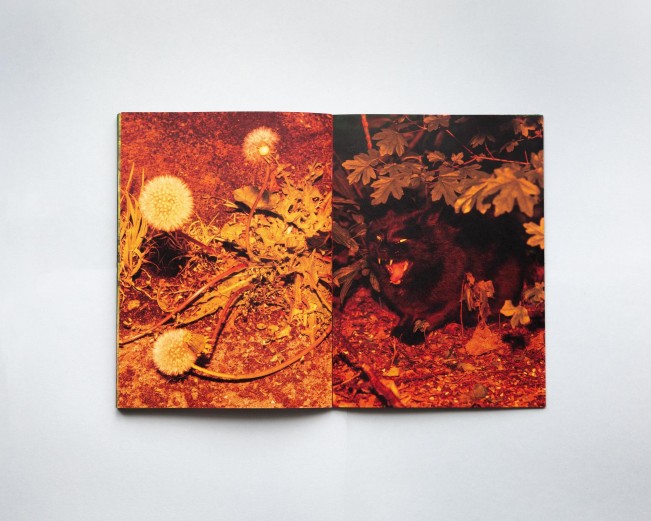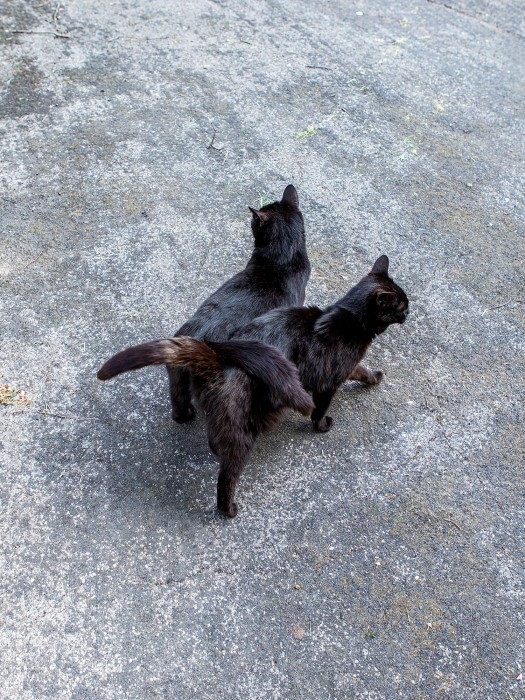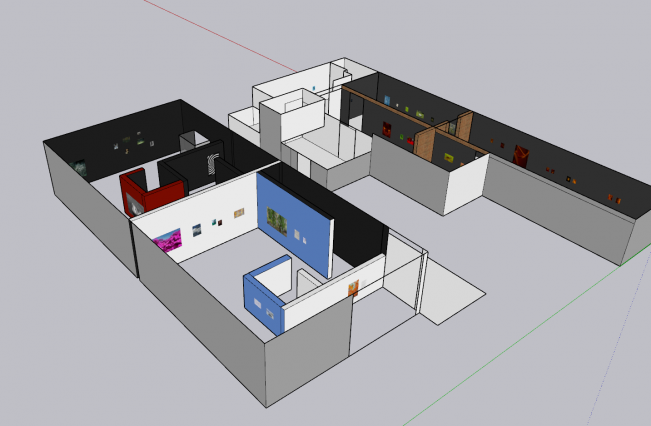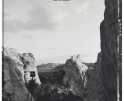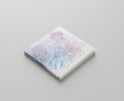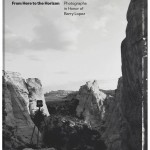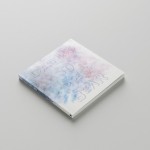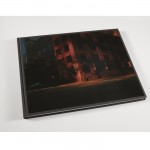Interview with Sari Soininen: Transcendent Country of the Mind / Black Cat Kingdom
Sari Soininen (b.1991) is an internationally recognized Finnish photographer.
Sari holds an MA in photography from UWE Bristol (2021), BA from Lahti Institute of Design (2014), and she carried out exchange studies in Edinburgh College of Art (2013).
Her colourful otherworldly photography draws from philosophical thoughts and personal, mystical experiences. Her interest is in providing the viewer with alternative ways of seeing the world and reality around them. She uses long shutter speed, colour gels and projection to build dreamlike alternate realities within the moment.
After completing her BA degree Sari began a career in graphic design, event photography and animation. In 2019 she decided to pursue fine art photography and started her masters. She is currently working on an extensive solo exhibition for Lahti Museum of Visual Arts Malva.
Sari has limited edition works in private collections in Finland, the United States, Canada, Japan, Sweden, Denmark and the United Kingdom. She is represented in France by Marie Valat Agency.
Thank you so much for taking the time to speak with me! I’m a big fan of your work so I’m excited to dig into things.
Thank you for having me, and I’m glad to hear you like my work!
Does your background of working in graphic design and animation influence your photographic practice at all? Also, do you draw influence from any non-lens-based artists as well?
When I was younger, I used to really love Salvador Dali, and I guess all kinds of weird paintings. That sort of weird world can be seen in my photos, even in the way I make them. I basically don’t edit my photos at all, I use long shutter speeds and colored gels to create everything in the moment. I like paintings and other mediums, but I can’t say if they’ve really influenced me.
What’s your methodology for when you choose to use flash or different colored gels?
It’s quite intuitive. If a moment has the weirdness already present, I may not use it. However, if it’s an image that I feel may need a little extra something to bring out the weirdness, then I use colored gels and flashes. I guess when it comes to picking a blue or pink gel, it’s just what feels right for the moment.
I love the titles of your projects! Do you have a specific approach when it comes to naming a body of work?
Transcendent Country of the Mind is from Aldous Huxley’s Doors of Perception. There’s a line where he describes this “other world” after taking mescaline and uses really beautiful words to describe it. I feel that maybe I’m not good with words, so when I saw Transcendent Country of the Mind, I was like, “that is exactly what this thing is about.”
Shallow Waters, Misty Waves is actually from Kalevala, which is a Finnish national epic, and the photos are actually kind of influenced by it as well. The title of the project is just a line from that story put into Google Translator… and it just fits.
I think reading is really important for my work. So, I read a lot of philosophy, and that’s where I find most of the words to describe the work, and the titles for the projects as well.
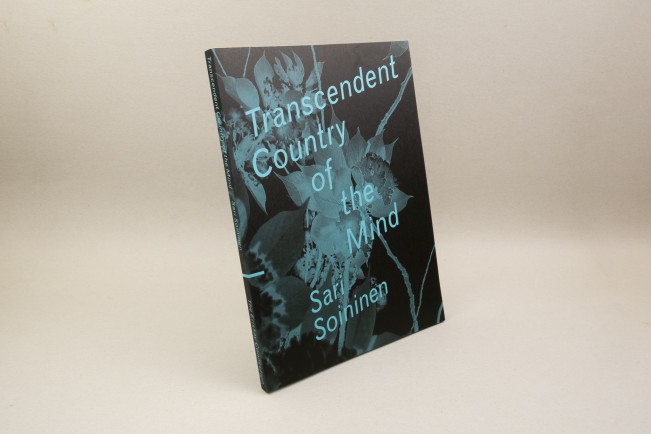
© Sari Soininen, the book, “Transcendent Country of the Mind”
How does your approach to image pairing and sequencing vary between a physical installation or exhibition, compared to in a book format? I feel as though it’s particularly important for experiencing a body of work like Transcendent Country of the Mind, and was curious if you could just talk about that a little.
Hmm yeah, well I actually haven’t had a big exhibition of Transcendent Country of the Mind yet, but at the moment, I’m actually working on a huge solo exhibition in Finland. It’s been really different to think about how to lay out the images… But for the book of Transcendent Country of the Mind, I worked with a publisher and a designer.
At first, I had made my own edit, and I said to the publisher, “okay well you can do whatever you want with the images and sequence them in the way you see fit.” Then when they did it, but I felt it wasn’t a proper reflection of what the work intended to do. Because you know, psychosis is such a personal experience, like things aren’t connected in really weird ways, so I don’t know… sometimes how I sequence the images may not make very much sense. Despite that, they usually have a really really specific meaning, and why “this” image needs to be next to “this” image, or what comes after the next one. It’s trying to show the weird mind of a crazy person trying to put things together, so it’s difficult for someone else to approach the body of work. What may traditionally or formally make sense to them, doesn’t make “sense” given the context and concept of the project.
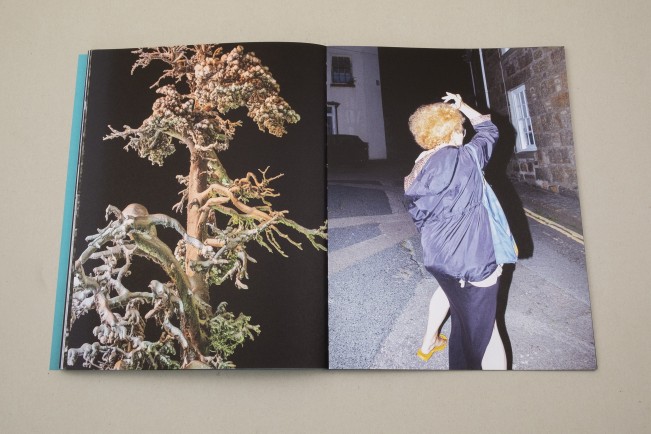
© Sari Soininen, image spread from the book, “Transcendent Country of the Mind”
How much of the decision-making in terms of scale, full bleed images, etc. were yours vs. the publisher/designer?
Well, the full bleed was mine, and was something I said straight away, it needed to be that way. The cover was something I worked with the publisher to design, as well as the fonts and layout of the book. I really liked the idea they had for the binding. When you open the book it’s kind of like you’re opening up the inside of my head.
I actually think I have the book right here so I can show you what I mean! The whole thing is inside of my self-portrait and head, which was their idea and I thought was really nice.
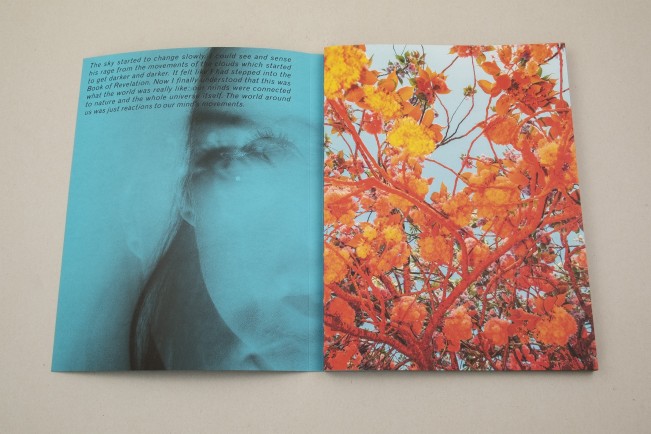
© Sari Soininen, inside cover of the book, “Transcendent Country of the Mind”
Oh, I also made a dummy of the book myself, which I can show you as well. So, this was my prototype from a really long time ago. You can see I sewed it together myself, very badly done *laughs*. I had the idea that there should be the text in the middle, with different sizing and paper, but for the published edition, it would’ve cost too much so we couldn’t really do that. So, there were some compromises we had to make so that it wasn’t too expensive.
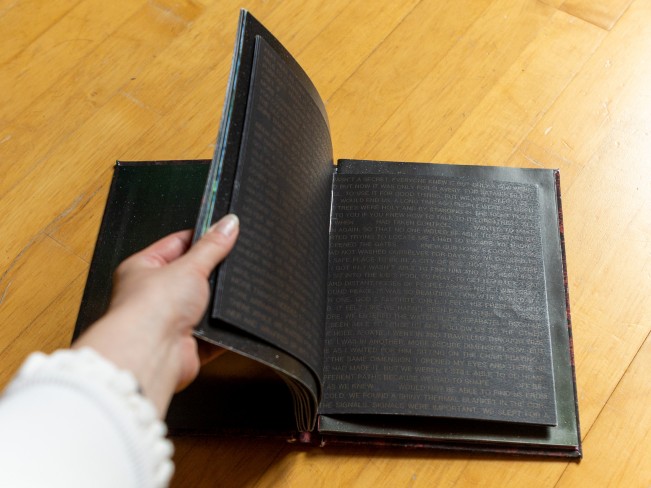
© Sari Soininen, dummy/artist proof of the book, “Transcendent Country of the Mind”
I was also wondering if you could talk about the decision to have black-and-white images alongside color in the book. Did you plan to have both from the start?
I had already edited all the images before I began to sequence them, and then they just fit in the right places. I don’t think the black and white ones would work as colored ones, so it was kind of a practical solution as well.

© Sari Soininen, “Dimension #26″ from the series, “Transcendent Country of the Mind”
In the book there’s a stark lack of faces, they’re all obscured in some way. Whether it be through flash, framing, gesture, etc. I was wondering if you could talk about the decision and thought process behind it?
It was something that felt natural. Like it was about my experience rather than anyone else’s… so I can’t really show anyone’s face since it’s about me, not other people. It also helps in creating the weirdness. The God that was talking to me while in psychosis didn’t really have faces. There were also these other weird creatures that didn’t really have a face either.
So, having all these people without faces, they almost become objects, sort of like a tree or something not sentient. Because like… when you’re in a psychosis, you’re so in your own head and then other people become something different… something they’re not.
You describe them as “creatures,” at some point do you not even think of the subjects as people at all then?
Yeah umm so three were all kinds of creatures *laughs* so basically… the psychosis took a lot of aspects of Christianity mixed with Paganism, and then I would feel as though I was haunted all the time. I’m not sure if they were more like people or more like some kind of spirits.
While in the psychosis I realized the “true nature” of reality and how to “rule” the world in some way, and I wasn’t supposed to know that… There were these people, or “creatures,” or whoever they were, that tried to hunt me down and take me somewhere so that I wouldn’t be able to know these secrets.
Dogs and cats seem to be a motif in your work, or at least a very consistent subject matter, is there a reason behind the choice?
Since I tend to photograph what I see and try not to plan beforehand, what I run into usually ends up being my subjects. In Transcendent Country of the Mind though, the animals speak about the Paganistic idea of animals being sacred, creatures that have some mystical quality.
But I have a book, Black Cat Kingdom, coming out soon about some neighborhood cats! It’s getting published in the UK next month (October 2023) and is a sci-fi story about the community cats during lockdown, just them going around being all weird.
Using flash with colour gels, Soininen transforms the cats into colourful, otherworldly creatures inhabiting a fever dream. Her photographic process draws on philosophical wonderings about reality, and her personal, mystical experiences; Soininen offers the viewer a vision of alternative realities as she sees them.
The black cat is a rich folkloric and superstitious symbol across many cultures, and in this project they are treated as such. To the Celts, black cats were sacred; the ancient Egyptians worshipped the Goddess Bastet, who was depicted as a black cat; and black cats are repeatedly referenced in pop culture and cinema, such as The Matrix.
The format of the book is labyrinthine. A surreal and winding journey through multiple sections and gatefolds, overlapping to create a concertina-like structure. The book reveals itself in new ways upon each viewing.
Black Cat Kingdom will be published to coincide with Soininen’s first major solo exhibition at the Lahti Museum of Visual Arts Malva, Finland in November 2023. A UK launch of the book will also take place at Photobook Café, London in October.”
besidespress.com/Black-Cat-Kingdom
Do you want to talk about that project a little more?
Yeah! So, I was living in Bristol when the first UK lockdown began, which lasted for about 3 months. One morning when I was taking my dog for a walk, I went through an alleyway I usually don’t go through, and this gang of 5 black cats just ran towards me. It was really weird! It almost felt like a glitch in the matrix or something, and I was like “what the fuck is going on,” so I went back the next day and there they were.
They just gathered up there in the morning, every day. So I began to bring them food and play with them. It kind of ended up being a way to escape reality, since I couldn’t really see people or go anywhere due to lockdown, but was able to hang out with these cats. So, I built this little alternate reality around them, and that’s what the book explores.
That’s such a cute story! Were you working on that while also continuing another project?
Yeah, that was around the same time that I was making Transcendent Country of the Mind, I was doing the cat project simultaneously. Which I think was kind of nice. Transcendent Country of the Mind was really personal and heavy since I went back to all the traumas from the psychosis. It was really heavy stuff, but making this more playful project with the cats was just an enjoyable thing to do.
Is the image of the two cats in Transcendent Country of the Mind of that same community?
They are, yeah! It’s quite nice that there’s a picture from the same moment in the Black Cat Kingdom and in Transcendent Country of the Mind, it feels like a branch of the work. Which is quite nice.
Has your approach to image-making shifted at all since finishing both those projects and starting something new?
I feel that when I began to shoot for the new project, Shallow Waters, Misty Waves, I was struggling a lot. I was caught up thinking, “what can I do now? I made Transcendent Country of the Mind, and now I’m healed, I don’t have to make a body of work about anything in that sense any longer… I don’t have the trauma anymore.”
So, I was like, “I need to figure out a subject that I want to photograph now,” but that approach just didn’t feel natural to me.
I just kept shooting and shooting, and so this new project, talks about what Transcendent Country of the Mind does, but in a different way. There’s not that LSD psychosis world anymore, but it’s still about the “other world,” and what weirdness we can see when looking at it.
I still shoot in the same way, but to me, the images feel more relaxed. They’re not in this terrible psychosis world, it’s more like the magic and weirdness of life without the terrible feeling in it.
You mentioned reading being important to your practice… Has your interest in literature also shifted in some way?
I’ve always read a lot of philosophy ever since I was a teenager, so that’s been a big part of my life. I think I’ve always been interested in what the world is about, but yeah I still read a lot of philosophical things and I feel that for this project… the new project, that’s even more important. But I guess I’m reading mythology as well now, and occultist material too, so I’m really interested in that.
At the moment, I’m reading this book about a Kashmirian philosopher, Rajanaka Kṣemarāja, who lived in the year 1200. It’s kind of this occultist way of looking at life, and it’s really difficult to read… but I’m gaining an understanding from it. It’s really interesting stuff, the book is titled The Secret of Self-Realization: Pratyabhijna Hridayam of Ksemaraja, he explores ideas about the reality of life, it’s quite complicated… but very interesting!
Do you have anything else you want to share or highlight?
I have a huge exhibition coming up in Finland! The space is 700sq meters and just my work… for 5 months!
I’ll have 5 different projects there, which is quite crazy. I still feel like I’m in the early career phase as an artist, like I only really got started about 3 years ago… so it feels really special. Everything came so suddenly, I gained a lot of recognition and it was like “what the fuck this is weird.” But yeah, I’m really happy about this exhibition! It’s going to be at the Lahti Museum of Visual Arts Malva.
It’s going to be pretty huge… in the biggest space, Transcendent Country of the Mind is going to be installed, and I’m dividing the space into two different rooms. There’s going to be heaven on one side and hell on the other, and I’ve also got a sound designer who’s been making all the ambiance and music… there’s also going to be some video installation… and a tunnel connecting heaven to hell that’s about 13 meters long, the space is huge!
The exhibition starts in November so, unfortunately, I don’t have any images, but it’s going to be quite cool! Oh, but I made this sketch-up plan, a 3D installation of the space, it’s a bit crude but it’s what we have been using as a reference.
Sari Soininen
Instagram: @Sari_Soininen
Copies of Black Cat Kingdom are available on besidespress.com/Black-Cat-Kingdom
Jake Benzinger (he/him) is a photographer and book artist based in Rockland, Maine; he received his BFA in photography from Lesley University, College of Art and Design in Cambridge, MA. His work explores the intersection of dreamscape and reality. Through the dislocation of space, he weaves together imagery to construct a world that exists in the liminal, investigating themes of duality, longing, identity, and the natural world.
He is currently a gallery assistant at Blue Raven Gallery and recently had work featured by Fraction Magazine, alongside exhibiting both internationally and in the greater Boston area. His most recent body of work, Like Dust Settling in a Dim-Lit Room (Or Starless Forest), was recently self-published and has sold out of its first edition hardcover books, with a second coming in November 2023.
Instagram: @Jake_Benzinger

